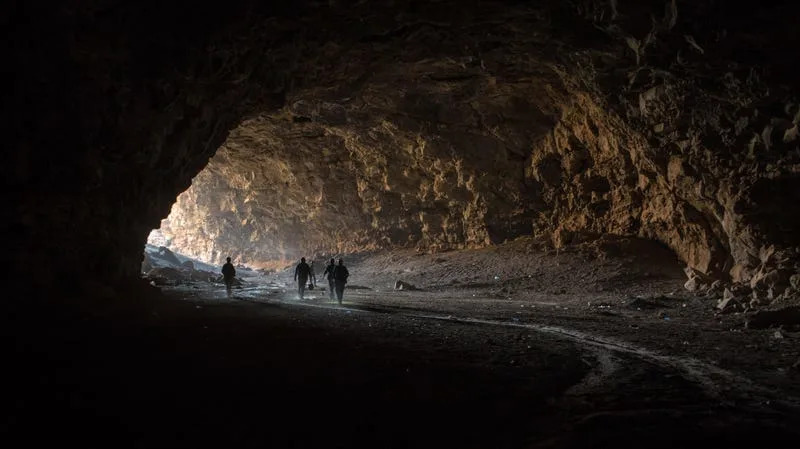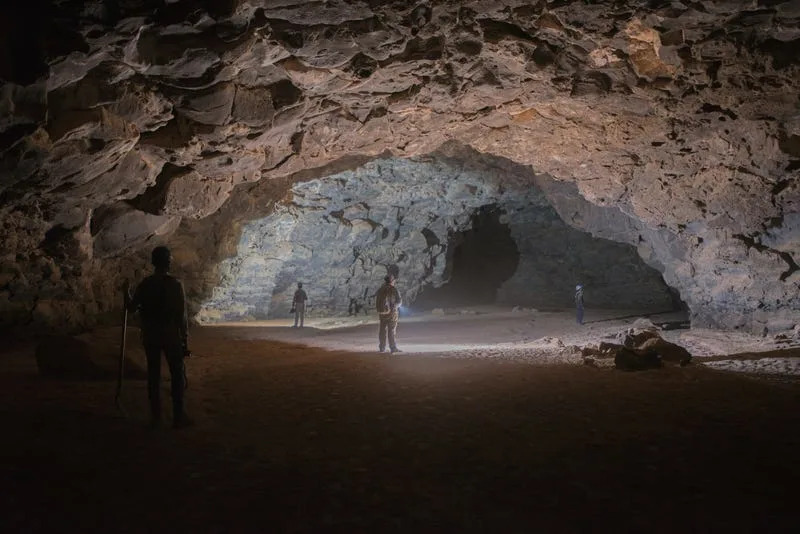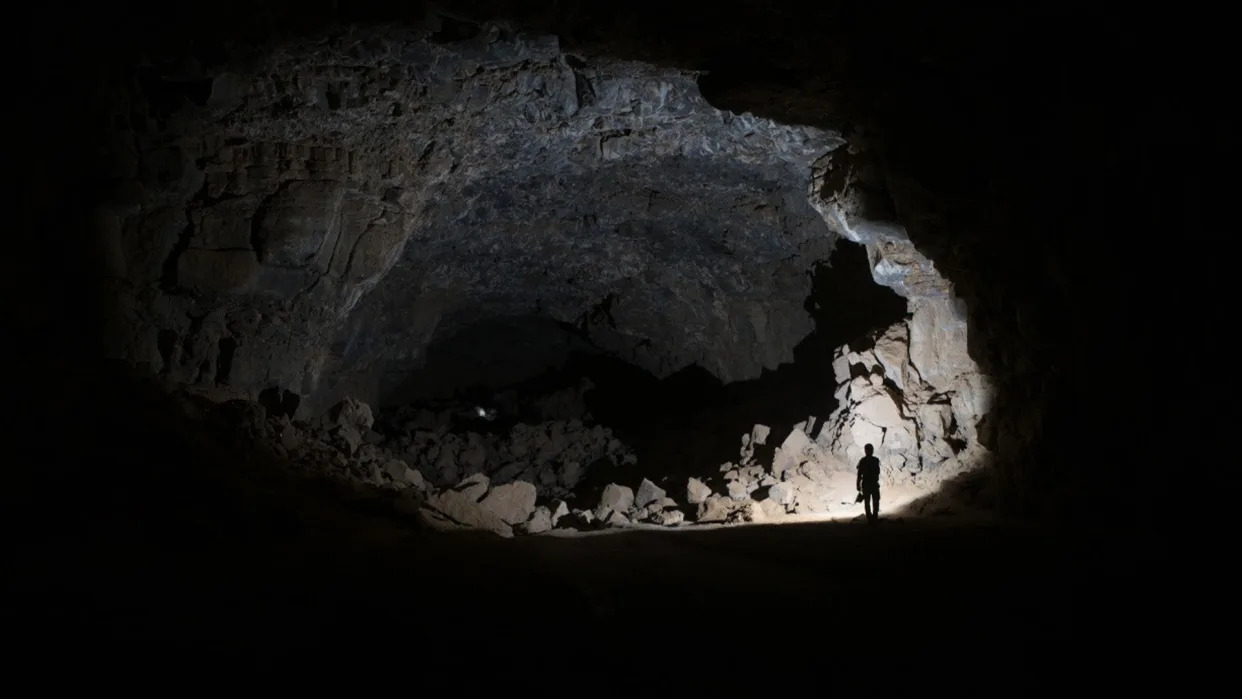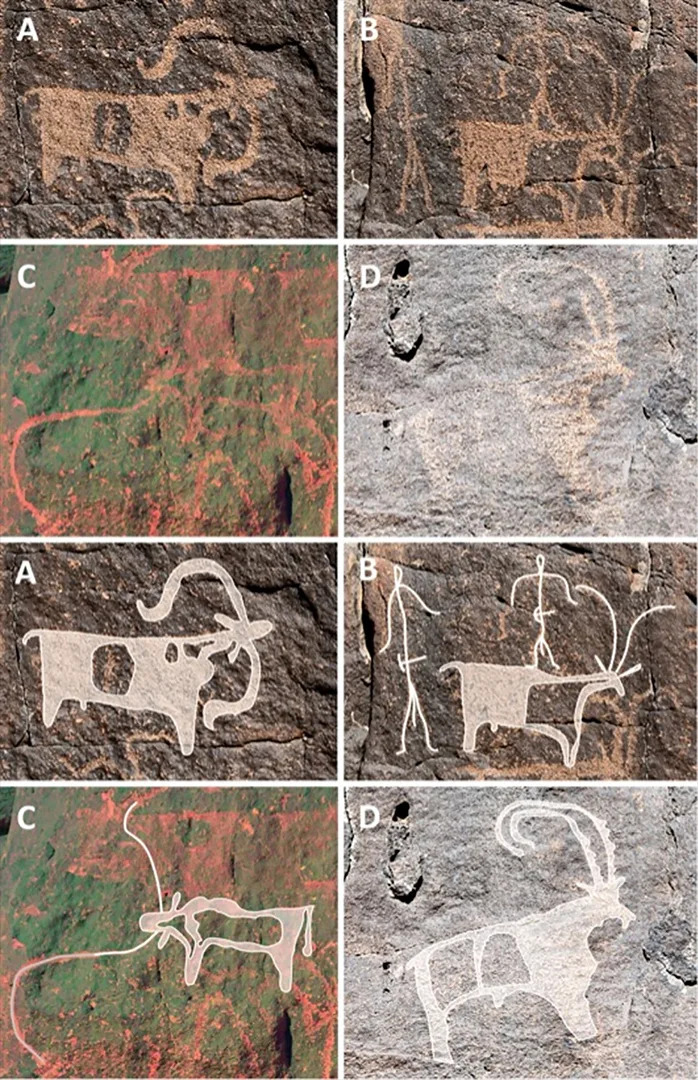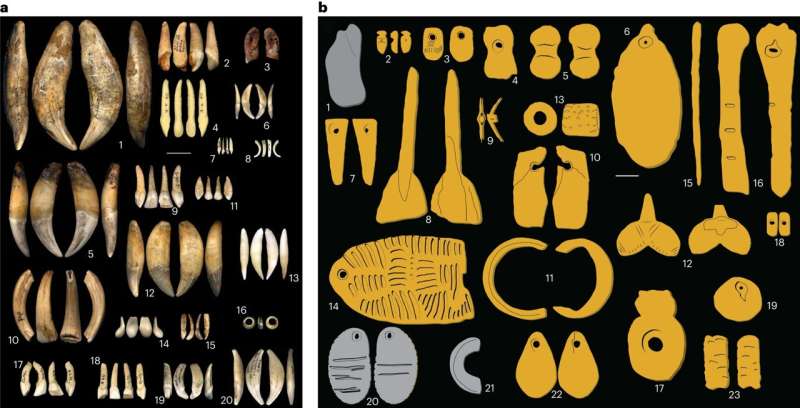LEOPARD'S VS HYENAS
Spotted apex predator being pressured by spotted pack hunters – and it's our fault
UNIVERSITY OF COPENHAGEN - FACULTY OF SCIENCE
IMAGE:
IMAGES FROM CAMERA TRAPS IN UDZUNGWA. FROM THE LEFT: FEMALE LEOPARD, HYENA, MALE LEOPARD
view moreCREDIT: RASMUS W. HAVMØLLER
Who’s stronger? A solitary leopard or cackle of hyenas? And which is best at getting along with humans?
University of Copenhagen researchers closely studied this in a large East African natural area surrounded by rural settlements. The study demonstrates that the presence of humans has a direct impact on the competitive relationship between the two large predator species: leopards (Panthera pardus) – the iconic spotted feline and the spotted hyena (Crocuta crocuta) – a kleptoparasite and pack hunter known for its comical appearance and characteristic 'laugh'.
"We humans continue eating our way into the little bit of wilderness left in the world. As we do, we impact wildlife. This study demonstrates that human disturbance upsets the balance between competing species and that this advantages hyenas," says Rasmus W. Havmøller, the study’s first author and a postdoc at the University of Copenhagen’s Natural History Museum of Denmark.
For months, Havmøller have been using camera traps to observe the dynamics between hyenas and leopards living in Tanzania’s Udzungwa Mountains – an approximately 2,000 km2 national park that is completely surrounded by agricultural and populated areas. The study is the first to combine camera observations of large predators over both time and space in a single analysis.
While the hyena as a species seems to be increasing in numbers, the population of leopards has been in significant decline for decades, both in Africa and worldwide. Since hyenas are the leopards' only competitor in this particular natural area, the ability of the two species to coexist is important for their survival. And here, the local population is an important factor:
"As the local people definitely don’t' like leopards, the leopards retreat as far away from humans as possible. Hyenas, on the other hand, benefit from the fact that humans don’t feel threatened by or pursue them. Consequently, hyenas live in close to human populations and may even exploit humans as shields against the leopards," says Havmøller.
"But the areas nearest to humans are also the areas with the most prey. And as hyenas assert dominance over these areas, it increases their ability to outcompete leopards and potentially threaten the leopard's adaptability," adds Havmøller.
Size matters
The researchers' observations confirm that size matters. While male leopards, which are larger, retain their dominance over hyenas, the situation is different for female leopards, which are smaller.
"Even though the male leopards are the ones in charge, the hyenas aren’t exactly scared off by them. They simply hang out in the background – probably to follow the leopards and steal their prey. But the physical inferiority of the hyenas seems to be compensated for in the areas closest to humans, because male leopards pull out," says Rasmus W. Havmøller, who continues:
"Female leopards, on the other hand, completely change their behavior when hyenas are in the area. They become diurnal, whereas hyenas are primarily nocturnal. This is probably because female leopards are smaller than hyenas, and that they will likely lose in any fight over prey."
Overall, the study shows that the hyenas benefit from living near humans.
"This suggests that the hyena's ability to adapt to areas of human activity may strengthen their overall success as a species and their competitive advantage over other large predators as we humans disturb more and more nature," says Havmøller.
When leopards are pressured, cascade effects may follow
According to the researcher, the shift in female leopard hunting patterns may have negative consequences:
"If you open up for more tourism and build more roads in the national park, the female leopards will be pressured immediately. They aren’t able to differentiate between safari tourists – who are most active during the day – and poachers. In time, they will probably learn that safari guests aren’t dangerous. But if there is a large and rapid influx into the area, you will probably see a decline in their population," says Rasmus W. Havmøller.
If leopards are seriously pressured out of the food chain, one should expect the emergence of what are known as cascade effects in the ecosystem:
"Plucking a large predator like leopards out of a food chain, which can be the ultimate consequence of human disturbances, may have very violent effects. Populations of other species, such as certain monkeys, whose populations are kept in check by leopards, will suddenly become too large and change the balance of the entire ecosystem," says the researcher.
As such, Havmøller hopes that the study will serve to encourage restraint when it comes to managing wilderness areas.
"Our results clearly indicate that human disturbances can change the competitive relationship between important predators. So, I hope that considerations will be made when expanding activities in wilderness areas, so as to roll them out slowly and give animals a chance to adapt. Furthermore, it would be good if the effects of human disturbances were monitored in more places using camera traps," concludes Rasmus W. Havmøller.
HYENAS VS. LEOPARDS
- Leopards are unpopular among local people in many places because they may hunt livestock and attack humans. Hyenas, on the other hand, "clean up" by eating sick or dead livestock and don’t pose a problem for humans.
- Female leopards (approx. 20-43 kg.) are about half the size of male leopards (approx. 51-72 kg). Hyenas are in the middle in terms of weight (approx. 48-56 kg).
- Leopards are solitary hunters, whereas hyenas hunt in large cackles (clans), which can be an advantage for hyenas in confrontations with leopards.
- Hyenas are kleptoparasites that regularly steal the prey of other carnivores – including leopards.
- Leopards on the other hand, are masterful tree-climbers, which allows them to protect their prey from hyenas.
ABOUT THE STUDY
- The researchers behind the study are: Rasmus W. Havmøller and Linnea W. Havmøller from the Natural History Museum of Denmark, University of Copenhagen; Arielle W. Parsons from Lincoln Park Zoo, USA and Roland Kays from North Carolina State University, USA.
- The study has been published in the scientific journal Ecosphere.
- The research is supported by the ERC under the EU’s Horizon 2020 programme.
Map of Udzungwa Mountains, Tanzania
CREDIT
(map from the scientific article)
JOURNAL
Ecosphere
ARTICLE TITLE
Sex and size matter: Intricate dominance relationships in an East African large carnivore guild
